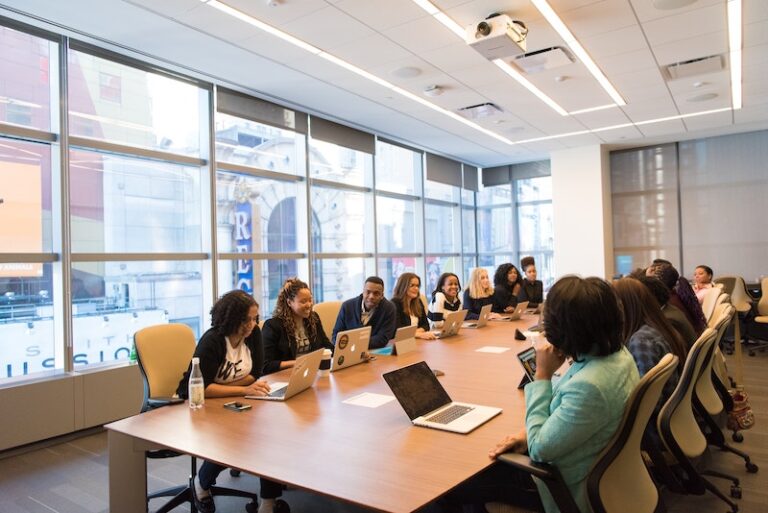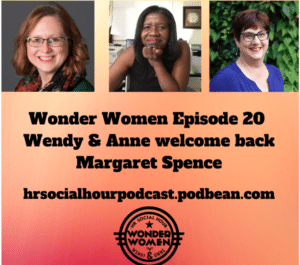Leaders: Diversity Still Needs Pioneers
Smart Leaders Must Take Bold Risk to Highlight Inclusion and Dismiss Stereotypes
A few months ago I was on a flight to Nashville, Tennessee to speak at a governmental risk manager’s conference I sat next to a very chatty woman who immediately said to me within minutes of sitting down, “So why are you going to Nashville?” I responded, “I’m going to speak at a conference.” She said, really? Her tone was “really” in disbelief. I knew instantly that her stereotypical perception prevented her from seeing me as a public speaker. What she saw was a black woman dressed in a simple T-shirt, jeans and sneakers, I looked nothing like the CEO of a company or someone who could be the keynote speaker at any event.
Immediately, she stared questioning me, “What are you speaking about?” she asked. I said, “Risk management”, that went over her head. I could see her eyes glazing over, “Risk Management, what is that?” she said. I explained in simplistic details, that I was a workers’ compensation injury management expert who focused on helping disabled employees remain in the workforce by educating employers on proactive integrated disability management, linked to prudent HR polices. I guess she was waiting for me to say something like love and marriage or child care or some social issue. But I said something technical. The marketer in me kicked in, I figured she was a captive audience, so I delivered my elevator speech, reached into my handbag retrieved my business card with one hand and whip out a copy of my book with the other. Her face went blank, almost like someone in shock – she gave me that “I’m impressed” look. After regaining her composure she said, “Where are you from? You’re not an American.” I responded, “I grew up in New York City.” I knew that this wasn’t the answer she was after, because this is a familiar conversation.
My seat mate again said, “So tell me where are you from, originally?” To that question I responded, Jamaica. She immediately got happy, almost like a giddy child. She said, “I’ve been there on vacation so many times. I love your country, I love your people and I love the greenery that’s all over your country.” Really I thought, I don’t own the country it just happens to be my country of birth and my national origin, but for her I was the owner and keeper of all things Jamaican. She went on to tell me that she knew immediately that I wasn’t African American, she added that Jamaican’s are so intelligent, focused and driven to succeed. She even brought up the fact that every Jamaican she knew had at least 3 jobs – “they are always working to help someone back home.” She proceeded to give me an education on famous people with Jamaican heritage she mentioned, people like Colin Powell and Malcolm Gladwell.
What became apparent very quickly my seat mate no longer viewed me as black, she no longer looked at me as African American – I was different, I wasn’t black, definitely not white, I became an acceptable pale shade of sparkly gray. I was outside of the box that she put African-American’s in, I was superior and acceptable. She immediately introduced me to her husband and to her boss, a senior vice president of a major pharmaceutical company who was sitting in the aisle seat across from me. She started telling me her life story and became so comfortable with me that by the end of the flight she was offering to give me a tour of Nashville.
The first time the “where are you from? I’m from Jamaica” conversation occurred I questioned why that information was important because I do not have a distinct accent and I don’t have any visible signs that I could be an immigrant. When the person asking the question goes into a tail spin of glee after realizing that I’m Jamaican, you chalk it up to the love of Jamaica, a prime vacation destination. When the question is prompted by my career choice, or the fact that I am a business woman, or the fact that I am a published author – you realize that the person asking the question has to find a way to justify why I am different. Why I aspire to something beyond the normal. Over time, I began to realize and understand that the question is rooted in justifying the abnormal and creating an aura of acceptance, almost like a welcome to the new club. It is uncanny how the fact that I am Jamaican gives me instant membership into this new club.
In contrast, earlier that morning before I headed off to the airport I stopped at my local supermarket to pick up a tray of sushi my favorite travel meal. As I approached the sushi counter I observed a woman putting bell peppers into a plastic bag, she looked up, saw me coming and she immediately dropped the produce and dashing back to her shopping cart to grab her purse, giving me a nasty look in the process. Through her minds view what she saw was – black female, potential thief, got to get my purse before she does. The first time this happens you think, ignorance but when it happens all the time – you actually chalk it up to ignorant stereotype. On some occasions when these encounters happen, I mentally rationalize the behavior by saying to myself, “I probably have more money in my wallet than she has in her bank account” – then I think, sometimes out loud, that the thief intent on grabbing your purse won’t look anything like me. My mental justification for this behavior doesn’t lessen the anger or internal turmoil these incidents create. These encounters highlight the fact that most individuals have preconceived stereotypical notions that can derail any efforts at true diversity and inclusion.
It is often said that we hire employees for the unique contributions they can make to the fabric of the organization, now envision if one of these two ladies was in charge of creating a diverse and inclusive workforce for your organization. Do you think that their stereotypical views would enhance or detract from the organizations goals? This is the challenge organizations face when they try to solidify diversity.
Arriving at the Diversity and Inclusion Table
In January, I sat in my office reviewing incoming emails when one email caught my eye – it said, “I would like you to speak at a diversity conference we are hosting in Sarasota. The email was from Lisa Krouse, JD, immediate past President of the Sarasota SHRM Chapter and a member of the Manasota Diversity Conference Steering Committee. My first thought was, what can I possibly add to the diversity debate that hasn’t already been discussed? The answer to this question was a lot – I immediately responded to Ms. Krouse’s email and began a journey that took me back to my childhood and to the conversations that shape my view of diversity and inclusion. This article and the stories I am sharing is an excerpt of the keynote speech that I delivered at the Manasota Diversity Conference on April 6, 2011.
The Paradigm of Influence and Having a Vision
My view of diversity is shaped as a second generation immigrant. My mother immigrated to the United States when I was six months old. She left me behind to be nurtured and raised by my father and grandmother. For five years ironically she worked as a nanny, scrimped and saved every dime hoping to one day offer me the ability to grow up – with opportunity. I distinctly remember arriving in the United State with my father from Jamaica on PanAm Airlines. A scared five-year old who didn’t grasp the opportunities I would have and vision that my mother had for my future. The night I arrived, my mother sat me down and gave me my first lesson in Diversity and Inclusion, She said:
- I want you to speak proper English, no slang, no drawl, and no accent – good English. First impressions are lasting impressions – people will judge you not by what you can do, but what they perceive you can’t do. Perception
- You will wake up with a book in your hands and go to sleep with a book in your hands– education is the great equalizer. Knowledge
- Pick your friends wisely; she said bad company creates guilt by association. Find people who will help you achieve your goals. Mentorship
- If you wake up to be mediocre don’t get out of bed. You must be the best from the moment you wake up to the time you go to sleep – she added if you’re going to be a bottle washer be the best one you can possibly be. Success or Achievement
My mother repeated these four things through my life until they became the fabric of my existence. She knew that in 1960’s America – Perception, Knowledge, Mentorship and Success mattered. She also knew that these things would become the cornerstone of what diversity and inclusion would look like for me. Through the five years she worked and sacrificed to bring me to the United States, she recognized and instinctively knew that I would have to work doubly hard to achieve success and receive the recognition bestowed on my counterparts in the corporate world – her vision, set the stage for my vision.
Today when I look back at the conversations I had with my mother, I am reminded of a quote by John Maxwell. He said, “When you empower people you’re not influencing just them; you’re influencing all of the people they influence.” I posed two questions to the audience first, how can we influence others by offering diverse and inclusive opportunities? And second, who are we mentoring to take the diversity torch to the next level?
Diversity requires leadership. Inclusion requires vision. Diversity and Inclusion exists when leaders have a deep seated commitment to providing opportunity that empowers their workforce.
Is there room to be a Diversity and Inclusion Pioneer?
I remember after Barack Obama was elected President, many people immediately said discrimination is over – it no longer exists because “we’ve moved beyond it.” Don’t get me wrong, there’s no denying that we have come a long way – real progress has been made but we must not become complacent. The question that the Manasota Diversity Conference sought to answer is: how do we acknowledge our achievements while evaluating what is still left to be checked off the list?
To answer that question I decided to evaluate one small slice of the diversity debate – the achievement of women in the workplace beyond the managerial level. What I found was startling. Fifty percent of college graduates entering the workforce are women, half way through their careers only thirty percent of them will become midlevel managers and only ten percent will make it to the coveted C-suite. The most shocking discovery was the lack of diversity on corporate boards. According to the 2010 Catalyst Census: Fortune 500 Women Board Directors, women hold 15% of Fortune 500 corporate board positions – 12% of the Fortune 500 companies who do not have one woman on their board of directors. The number gets more dismal when you look at women of color – they occupy 3% of the board seats and 70% of Fortune 500 corporations do not have one woman of color on their board. For Hispanics and other minorities these numbers become even more shocking. So there is still a disconnect between diversity in the organizational structure and diversity in the boardroom.
Just when I was about to become totally disillusioned Xerox proved that some companies clearly understand that pioneers are still a necessity in diversity. In July 2009, they named Ursula Burns as their new CEO, she became the first African American woman to head a Fortune 500 corporation, but the most remarkable feat was the fact that she was the first woman to replace another woman as CEO. Beyond those two achievements the one thing that stood out for me was the fact that she was mentored into this role. Mrs. Burns joined Xerox in 1980 as a Mechanical Engineer summer intern and thirty years later she is running the company.
I am willing to partially check off the C-suite achievement box but we cannot begin to make true inroads until we populate the C-suite and corporate boards that influence diversity and inclusion throughout the company structure. Talent acquisition is one of the most visible ways that companies can influence and move diversity forward, we must find companies who are willing to mentor and provide strategic opportunities for future leaders.
Engagement Matters
So as Ximenia Granada, Chair of the Manasota Diversity Conference and her team of volunteers pulled together this remarkable conference, I’m sure they didn’t realized how influential the conference would become or that they would be considered Diversity and Inclusion Pioneers. They challenged us to ask tough questions that garnered teachable moments. The conference provided attendees with the opportunity to show how diversity influences every facet of their lives; it also highlighted the importance of maintaining diversity and making inclusion a hallmark of corporate governance.
So as I closed out the conference I challenged attendees to answer this question: Can we simply assume that writing a “diversity policy or a mission statement” solves the challenges of creating a diverse and inclusive workforce from the Stockroom to the Boardroom? The answer was resoundingly – No!
Diversity, Empowerment, Inclusion, Opportunity and Success lies in your hands. There’s still room to be a pioneer, but first we must acknowledge and realize that diversity is not a quota! Companies do not fulfill the requirements of having an inclusive workforce by saying we have “One – woman, Hispanic, African American or disabled employee.” Corporations cannot leap for joy when their diverse workforce doesn’t include opportunities advance to senior management or their executive suites or their coveted boardrooms. Maybe, just maybe we can move beyond writing policies and mission statement to enacting policies that really make a difference.
Diversity is a blend of people and cultures into the fabric of the organizations structure but inclusion is a state or condition where differences are accepted, valued and respected. We must find ways to recognize that inclusion requires leadership – forward thinking and vision. A realization that where we start out is not where we will end up, and as Marshall Goldsmith said, “What got us here won’t get us there.”
About the Author:
Margaret Spence, CWC, RMPE President/CEO of Douglas Claims & Risk Consultants, Inc. and the author of – From Workers’ Comp Claimant to Valued Employee. Margaret writes and speaks extensively on workers compensation, integrated disability management, employee safety and strategic organizational leadership. Her blog – WorkersCompGazette was awarded 2010 Top 25 Workers Compensation Blog by LexisNexis. Margaret is a member of the Society for Human Resource Management (SHRM) Special Expertise Panel on Employee Health, Safety and Security and the VP of Professional Development for the Greater Miami Society for Human Resource Management (GMSHRM). You can read additional articles written by Ms. Spence at www.WorkersCompGazette.com






